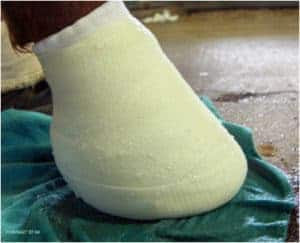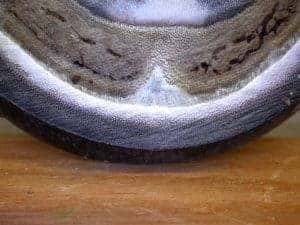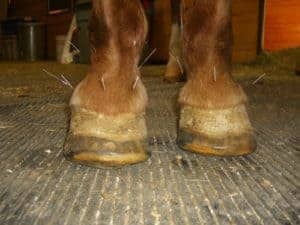
Support Strategies in Chronic Laminitis Cases
One veterinarian says designing a specific strategy that addresses all the needs of an affected foot is key.


One veterinarian says designing a specific strategy that addresses all the needs of an affected foot is key.

Prognoses for these cases are often poor, but foot casts might improve survival rates if applied early.

Hospitalized horses are at an increased risk for developing laminitis as a complication of injury or illness.

Farriers can help devise a hoof care plan to helps a performance horse return to work as soon as possible.

Research is needed to determine if the toe crena could be used as a prognostic indicator for laminitic horses.

One researcher says accupuncture’s pain-relieving and anti-inflammatory effects can help laminitic horses.
Contrary to popular belief, feral horses are not exempt from developing laminitis.

Corticosteroids’ benefits (when used appropriately, in low doses) should outweigh the risks.

David Hood, DVM, PhD, discussed effective methods for pinpointing laminitis pain and NSAIDs to control it.

While related studies are scarce, some are reporting success using stem cells to treat chronic laminitis.

Cryotherapy is known to have anti-inflammatory and pain relieving effects, both of which help affected horses.

The use of force plate-based technology could quantify lameness severity in chronically laminitic horses.
Before you drop several thousand dollars on a sale horse, take a minute to consider whether adopting might be your cup of tea.
Thanks to climate change and increasing amounts of grain blends, the prevalence of feed-borne mycotoxins (dangerous toxins exuded from molds) is on the rise, according to Trevor Smith, PhD, of the University of Guelph, Canada. Smith, a professor with a research interest in feed and food toxicology, discussed the effects of one of the most common families of mycotoxins–Fusarium–on
TheHorse.com reached a new milestone Oct. 12, when the 500th horse found a new home via the website’s all-breed free horse listings. Saucy Dance, a 3-year-old Thoroughbred filly, was fresh off the track at Laurel Park in Maryland when Teresa Robinson of Pylesville, Md., spotted her ad online. Bred and raised by Georgia Andreadakis, “Saucy,” had raced five
One of the many factors that can affect a competition horse’s focus is intestinal upset–specifically impaction and spasmodic colic. Kyle Newman, PhD, of Venture Laboratories, explored how sport horse owners can help prevent these colic episodes in their equine athletes at the Veterinary Sport Horse Symposium, held Sept. 22-24 in Lexington, Ky. According to Newman, an increase
Stay on top of the most recent Horse Health news with